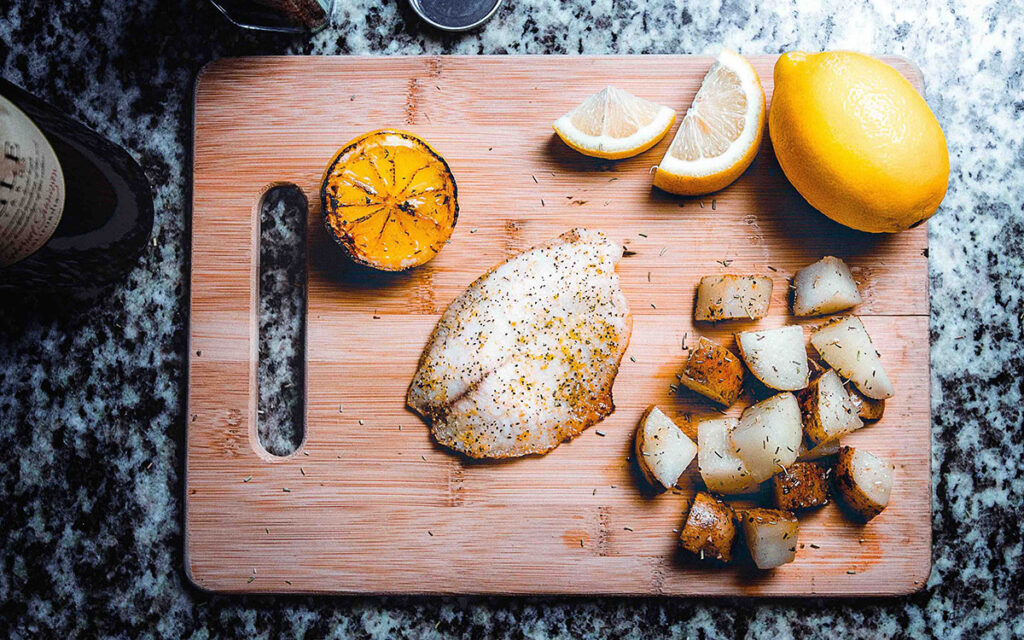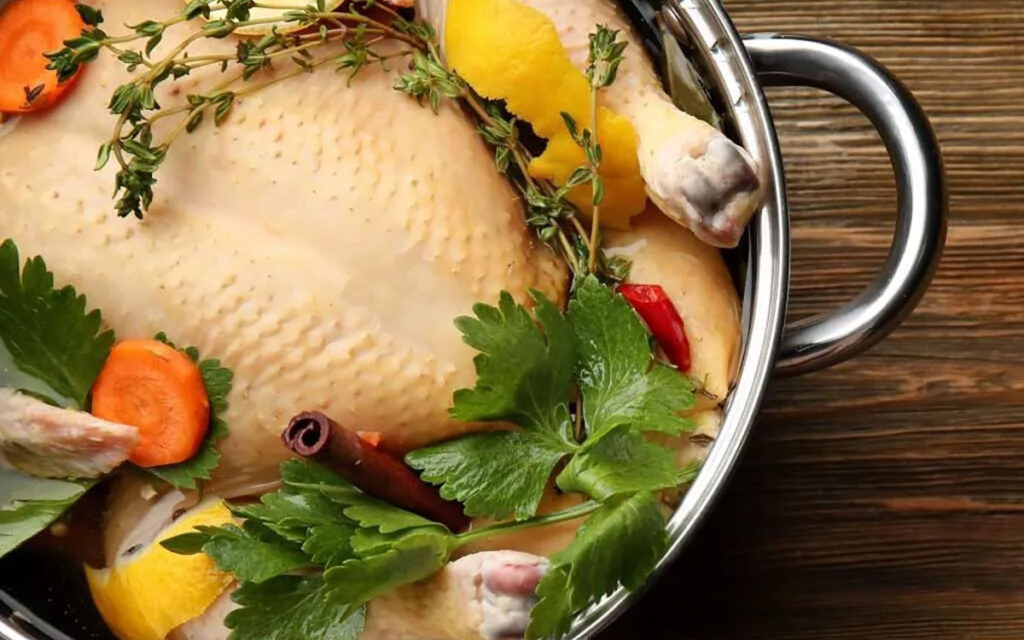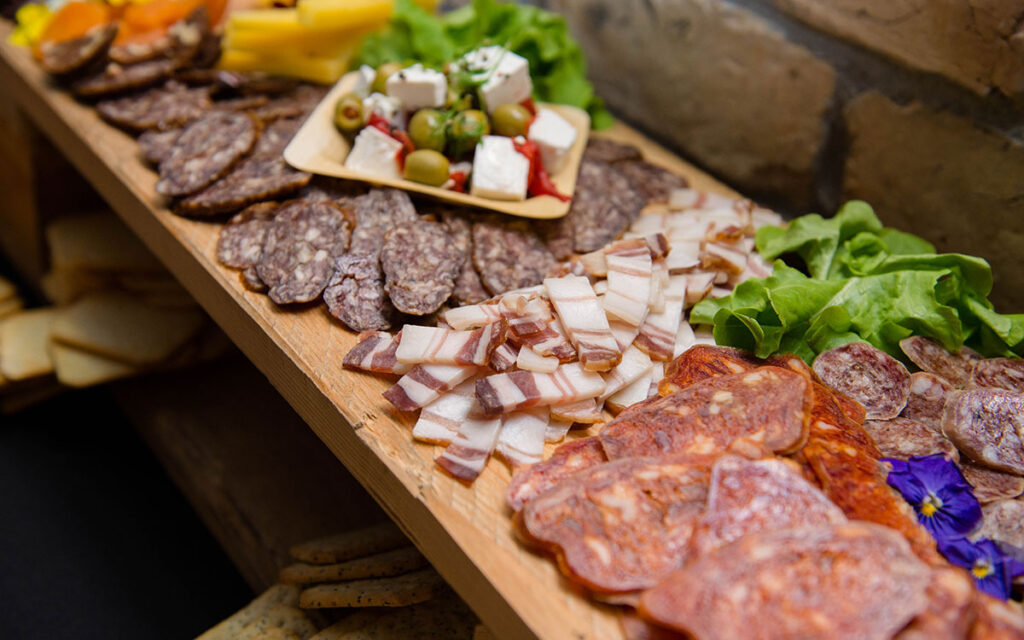One word: Preparation. In a professional kitchen setting, chefs and cooks need to prep their ingredients and complete their mise en place (assembling everything in one place), prior to service. This process can take hours!
An example of a time-consuming preparation in a restaurant setting is dry aging that involves taking large cuts of meat and aging it – from several weeks to months. If done properly, aging enhances the flavor and makes the meat more tender. The result is extremely rewarding but the process is difficult and has to take into account large amounts of space, and precise monitoring of temperature and humidity. Not to fret as there are easier alternatives that do not require extreme accuracy, constant monitoring, and a dedicated room for meat preparation.
Whether you are a novice in the kitchen, or a professional chef testing or experimenting with brand new flavors, it’s always great to have a safety net to reduce the possibility of dry, overcooked, and bland meats in any dish.
Preparing the meats
For poultry, leave it whole, spatchcock, or carve it into different parts (breast, wings, legs, thighs, carcass). For meats like beef, pork, and lamb, cut these into portions. Another alternative is to pound meats using a meat tenderizer. Now that it’s prepped, here are three ways to impart flavor or tenderize the meats.
| Marinate: By far, the easiest way to enhance flavor and make leaner cuts or tougher parts more succulent. Aside from finding the right marinade recipe, all you need is a food safe ziplock bag or a shallow container made from non-reactive materials like stainless steel, glass, or ceramic. Avoid marinade recipes that require oil. It adds no flavor and causes meats to burn easily during cooking. Opt for sour, water-based marinades like lemon, vinegar, and yogurt. |
 You can use lemon or vinegar to marinate instead of oil. (Photo: Spencer Selover) |
Let the protein marinate in the fridge for a few hours or overnight. Do not leave it any longer than 24 hours, as marinades that contain acids will break down the protein further and result in an unpleasant mush. Make sure you wipe off excess marinade before cooking the meat because a thick layer of marinade will cause the meat to boil than sear, and the outer bits will burn easily.
Brine (wet/dry): Brining is a technique used to season uncooked ingredients and keep them juicy and firm. Traditional brining is done by soaking ingredients in brine prior to cooking. This process is especially ideal for lean, relatively bland protein like chicken, turkey, and pork. There are two brining methods: wet and dry. Each method produces different results and has a few caveats.
- Wet brining is the process of soaking meat in a salt water bath. Using a salt water brine ratio that both extracts moisture from the piece of meat and helps the meat to absorb other moisture, the bath helps to season the meat. This method gives a more evenly, juicy, and moist meat. Make sure your fridge has plenty of space. A large container is preferred as the entire slab of meat should be completely submerged in the brining liquid.
- Dry brining simply means rubbing the meat down (like turkey) with salt and letting it rest in the refrigerator for 24 to 72 hours, and then roasting it. The salt changes the protein structure in the meat, causing it to release moisture and then reabsorbing its own salty liquid, resulting in juicy, tender, and flavorful meat. This method will result in crispy skin and facilitates caramelization and browning in the cooking process.

Wet brining works best for leaner meats like poultry, fish, and seafood while dry brining works best for fattier cuts like beef, pork, and lamb. (Photo: Derick Riches)
Cure: Besides imparting flavor to meats, curing can significantly extend the shelf life of fresh meat. It is a food preservation method used for ham, salami, and pancetta. Sea salt, kosher salt, sugar, and spices are the ingredients you would typically find in any curing recipe.

Curing extends the meat’s shelf-life of meat by preventing spoilage. (Photo: Milan)
If you are going to use this technique, note that meats cure at temperatures between -1°C to 4°C (30°F to 40°F). Going beyond this range will result in spoilage, while temperatures below this range could halt the curing process. Curing time varies with different cuts of meat. Make sure you research the recommended curing time for the cut of meat you are using. Lastly, cook your cured meats before consumption to avoid food-borne illness.
Cooking meat well takes practice and it’s not easy to get every technique perfect the first time and that includes preparation. But once you’ve nailed it, try experimenting with different recipes, seasonings, herbs, and spices to create new flavors for marinating, brining, and curing.








